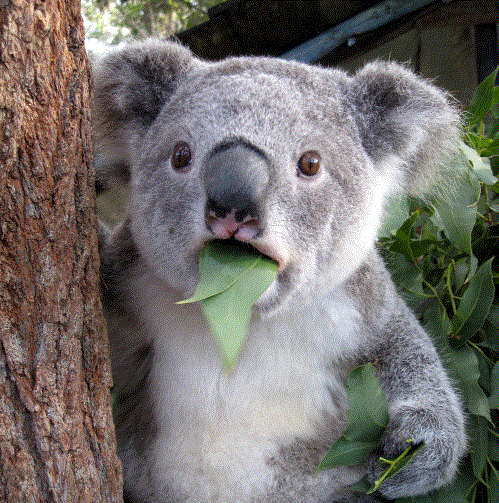Teaching koalas a safer way to cross the road

Koalas aren't the most intellectual of animals, but these leaf-loving tree-dwellers may be smarter than we give them credit for. In a first-of-a-kind study, scientists have tracked the marsupial's activity in response to newly installed wildlife crossings and found that, while dolphins they are not, these fluffy herbivores learnt very quickly to avoid oncoming traffic when presented with a safe alternative path.
Wildlife crossings are common enough in the Australian state of Queensland, just as they are in plenty of other parts of the world. But how attractive are these things exactly to wandering wildlife?
Looking to find some conclusive answers to this question, environmental researchers at Queensland's Griffith University monitored not just how many how many times koalas use such crossings, but tracked different koalas to learn about their reactions to the installations. They did this through camera traps, audio radio transmitters and RFID and wireless ID tags.
"We really wanted to know what individual koalas were doing, whether they crossed at the same time each day," says Professor Darryl Jones, co-author of the study. "We wanted more information than most people ever need and we did that using this range of technologies."
Koala's aren't the most mobile of creatures either, so it perhaps isn't too surprising that only 21 percent of the tagged animals bothered to come down from their eucalyptus trees and cross the roadways. But this still amounted to 130 crossings over a 30-month period, with those animals learning to use the purpose-built tunnels and ledges much faster than anticipated.
"We expected the animals to take a while to get used to them,"
said Jones.
"To our great surprise they were using them three weeks into it. Can you teach koalas new tricks? You can, that's the point. I was the first skeptical person to say they're not that smart."
The main purpose of the study, believe it or not, was to work out how effective retrofitted wildlife crossing are, not to delve the depths of the cuddly koala's mind. These things cost money, after all, so getting an idea of how many koalas are saved from vehicle accidents as a result of their installation can make for more cost-effective ways to preserve their population.
"The tunnels were an experiment,"
Professor Jones says.
"Nobody knew whether they would work or not. We really wanted to know what the local koala was doing so we got ridiculous amount of details of these animals. We needed to be clear on whether they were successful because the structures were so innovative and risky that we tried really hard to prove it. That's why it was worth it."
Политика конфиденциальности | Правила пользования сайтом







